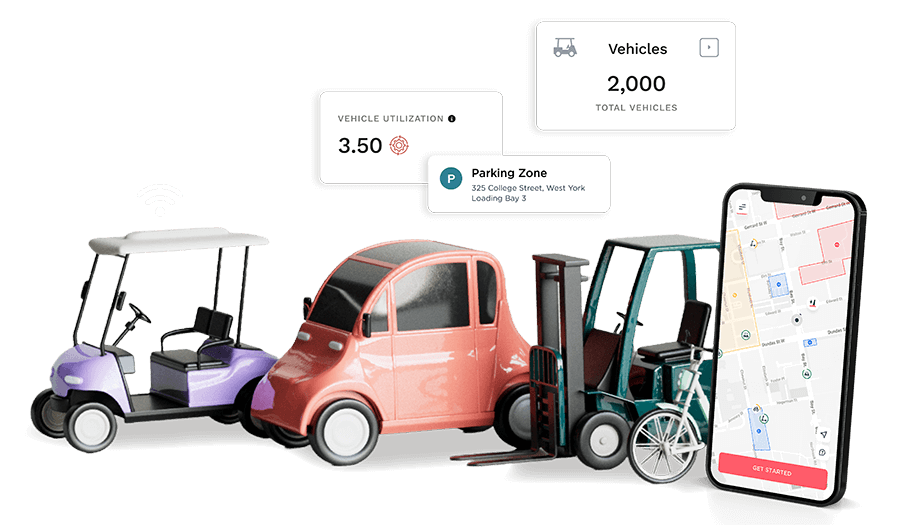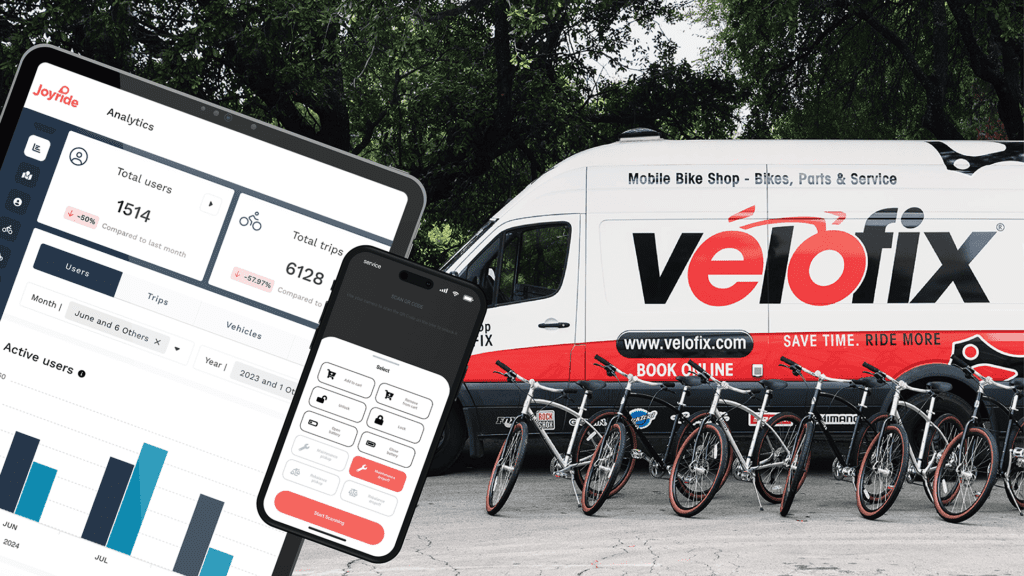It’s well-established that opportunities are ripe in the micromobility world. Already in 2022, micromobility companies have received more than US $1 billion in total investments. While shared mobility offers more opportunity than other potential avenues, the industry isn’t immune to failures.
Today, we’re looking specifically at electric scooter and e-bike sharing. One of the ways an e-scooter/e-bike rental business can fail is simply not having the experience to navigate the potential obstacles that are ahead. Luckily, with nearly a decade of expertise behind us–and countless hours spent powering operators in 200-plus global markets–we’re more than familiar with the common fails micromobility companies encounter, and the best ways to avoid them.
Top 7 Micromobility Company Fails
1. “Once I get my fleet established and branded, operations will take care of itself.”
At Joyride, we hear this a lot. Operations do not take care of themselves. Everything in this business is connected, and you’ll need to be confident in your operations to move forward. A scooter-sharing or bike-sharing fleet requires both physical and analytical maintenance. This relates to vehicle rebalancing, swapping batteries, relocating scooters if you’re operating a free-floating model, and responding to any customer support requests that come in through your Rider app. On the backend, you need an operational system that reports up-to-the-minute information on how and where your customers are using your vehicles. You need an operational system that speaks directly to your riders through in-app messaging and advertising. Automated tools put you in constant contact with your operations and customers, even if you’re not always behind the wheel.
To avoid this fail, as you plan to purchase hardware, insurance and everything else in between one important step is to plan your operational strategy. One item to consider is to make sure your operations are up and running seven days a week, 365 days a year. Even if your scooters are turned off at designated hours, your fleet ops should be “always on.” Have the best support team on the ground to address any rider issues promptly. Better yet, get second opinions from entrepreneurs you trust in the industry. They’ll help spot any flaws in your operations before anything becomes out of hand.
2. “I’m getting into the micromobility industry because it’s easy money!”
It’s true, operating a shared fleet of scooters or bikes is extremely lucrative. But you have to budget your upfront costs properly. Being a pioneer in an industry that disrupts the way people move has its rewards and its challenges. Some things you’ll need to keep in mind to strengthen your budget are:
- Vehicle Costs
- Maintenance
- Software Costs
- Insurance
- City Permits
If you need help with vehicle financing and insurance, talk with us!
3. “What’s there to decide? A public fleet is the only viable option.”
Another common misconception in the industry is that scooter-sharing or bike-sharing will only be successful if the business owner launches a public-facing fleet. This means your end-user is a customer who rents your vehicle from various locations across their city.
People usually think shared fleets are synonymous with on-the-street rentals, but in fact, it’s highly lucrative to have a network of electric vehicles leased to other businesses under a private B2B model. Think hotels, delivery systems, college campuses and residential complexes. These facilities all benefit from having on-the-spot scooter rentals, and from a business standpoint you only have one real customer. Joyride has customers with extremely creative B2B scenarios, such as renting animal-clad vehicles at amusement parks. The industry is new and vibrant, so your business model can be revolutionary, too.
4. “I’m going to build my own software platform. How hard can it be?”
Another misconception is that building your own software platform is easy, more cost-efficient and less time-consuming. In fact, it’s the opposite. The average cost of building an app-based platform is over $150,000 and can even exceed $700,000/year to maintain.
Choosing a white-label platform lets you handle everything from start to finish and in a much faster time frame. Compared to the numbers above, you can also get it for a fraction of the cost.
To learn more about white-label micromobility solutions, read our helpful explainer.
5. “The best way to save money is to buy the cheapest vehicles on the market.”
As the saying goes, you usually get what you pay for. With hardware, this is especially true. Buying cheap bikes or scooters will likely cost you more in the long run. That’s because they’ll have a much shorter lifespan, and you’ll find yourself having to replace your entire fleet in a much shorter time than if you invested in good quality hardware upfront. At Joyride, we help you select the best vehicles for your fleet needs, and will assist with financing, too. Every year we see hardware become more and more sophisticated and durable, so making the right choice shouldn’t always be made based on the cheapest option. Joyride has strong partnerships and preferential pricing with the best manufacturers in the industry. Reach out to speak with our hardware team to help you source the best for your model and market.
6. “I’ll expand to the next city or region and 10x my investment!”
Companies go wrong when trying to scale a single market fleet beyond the proper demand density of that market.
For example, you may start with 50 scooters and service a geo footprint of approximately three square kilometers. As you start making money, you decide to expand across the entire city which is 30 square kilometers.
We’ve seen a lot of new market forecasts miss because operators don’t understand the complexities when going into foreign markets. Understanding things like insurance, payment methods, unit economics, city requirements, the geography of the city, the list goes on!
Our advice would be to drop anchor in the town for a considerable amount of time before launching to carry out proper due diligence and to set yourself up for success. Then, once you see the potential is there, we’ll help you add more vehicles, currencies and riders to your fleet as seamlessly and quickly as possible.
7. A Final Tip About GPS
While 99% of your customers will be great, there will always be a few mischievous individuals who try and wreak havoc on your vehicles and business. One of the ways they can cause you stress is by stealing your vehicles.
You can have all the tracking and alarms you want for your bikes or scooters, but the best deterrent to theft we’ve seen is simply placing stickers that say “GPS Tracked” visible on your vehicle.
Avoid These #MicromobilityFails and More with Joyride
Joyride’s services are all about helping you dodge and duck the traps that catch plenty of scooter-share and bike-share businesses.
As the world’s first micromoiblity SaaS platform, we’ve become industry pioneers that provide expert in-house consultation and customer-exclusive resources to help educate operators. And this year, we’ll be taking our knowledge on the road to Micromobility Europe in a dedicated operator-focused workshop.
We also offer insurance access beyond what’s currently offered on the market, including exclusive partnerships with brokers and providers. And if you need hardware, we have a dedicated team that will procure vehicles and provide competitive pricing. We only partner with high-quality vehicle manufacturers to ensure your fleet will last.
Having worked with hundreds of operators in countless global markets, we assist with best practices and white-glove consultancy to set you up for success. So if you’re thinking of starting a scooter-share business or expanding to new places, talk with us.







